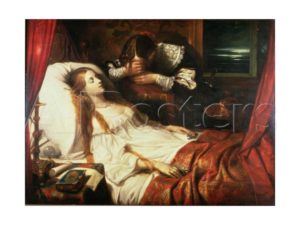Walter, T. (1999) On Bereavement: The culture of grief. Philadelphia: Open University Press.
Prologue – with Fiona, covers main concepts
Chapter 7. Guidelines for grief: historical background.
1500-1600 public grief same as contemporary England, but increasing introspection (diary writing, poetry.. )
1700s graveyard poetry flourished. “Draper observes that reason thinks in terms of abstractions and generalisations, emotions in terms of the specific and the particular” (Draper in Walter, 1999: 128). Cult of the cemetery.
Enlightenment grief – condolence. Sympathy. Mimicry of emotions and physical grieving. Adam Smith, 1759.
Victorian grieving (high point 1850-1890) – women did majority of mourning – workers mourned bosses, not vice versa – women lost status with husband – rules on how long to mourn for – female emancipation, decline in female mourning (no long status lost with death – 1890 – “the suffragettes and collapse of Victorian mourning have the same inspiration” (Walter, 131).
Critics of Western way of mourning (see Gorer, 1965) blame loss of ritual and guidelines. Do not want to impose these, so suggest personalised rituals
Thomas Barker The Bride of Death (1838) ((IMAGE))

“By the First World War, stoicism had replaced keening as the dominant response to loss” (Walter, 1999: 132). Lottery whose son died/house was hit. Knowing you were not the only one may have helped. **NOTE** in war, you are very aware that lots of people will die but anyway, lots of people do. It helps to connect to this awareness and know that, “you are not the only one whom fate had touched” (Walter 1999:133).
1800s – grief became feminine, not manly (public school boys) – tears are gendered debate, gendered history (Walter, 1999: 134).
SHIFT IN GAZE (what is looked at in death). Middle ages – soul. Early modern – corpse (humanist doctors & artists – Protestants don’t pray for soul – public health, too many bodies) – post-1960s, shifted to bereaved (bereavement literature says emotions are good). (page 135)
Comforters’ gaze also shifted, from body (clothing) to emotions.
Mourning dress comeback? Andre Agassi..((IMAGE))

Chapter 10. Viva la difference? The politics of gender.
Palliative care, dying required to speak of feelings: battle against medical establishment (Frank, 1995)? Battle within medical establishment (Arney and Bergen, 1984). In terms of the bereaved’s expression of grief, the “main object of attack is not grief’s medicalization, but a general culture of containment and control” (Walter, 1999: 160).
Wortman and Silver (1989), modified by Stroebe et al. (1994) say 3 emotional paths through grief:
1. Moving over time from distress to emotional stability. (expressivist clinical lore / contemporary Egypt / rural Greece / Victorian upper class women)
2. Never showing distress. (20th century popular culture / Navaho / Hopi / Balinese)
3. Staying distressed indefinitely. (Hindu widows)
Other researches add: 4. Moving over time from not showing distress, to showing it. (Only in short-term, until after the funeral)
Gender issue. Simonds and Rothman, feminists, “observe that virtually all late twentieth-century consolation books take it as axiomatic that the father’s grief is as intense as the mother’s, but he rarely shows it” (Walter, 1999: 172). (..see Simonds and Rothman, 1992:185)
Ingrian lamenting (Nenola-Kallio, 1982).
**NOTE: BUT CAN GRIEF EVEN BE QUANTIFIED, WALTER? re: do men grieve as much as women. pages 173-**